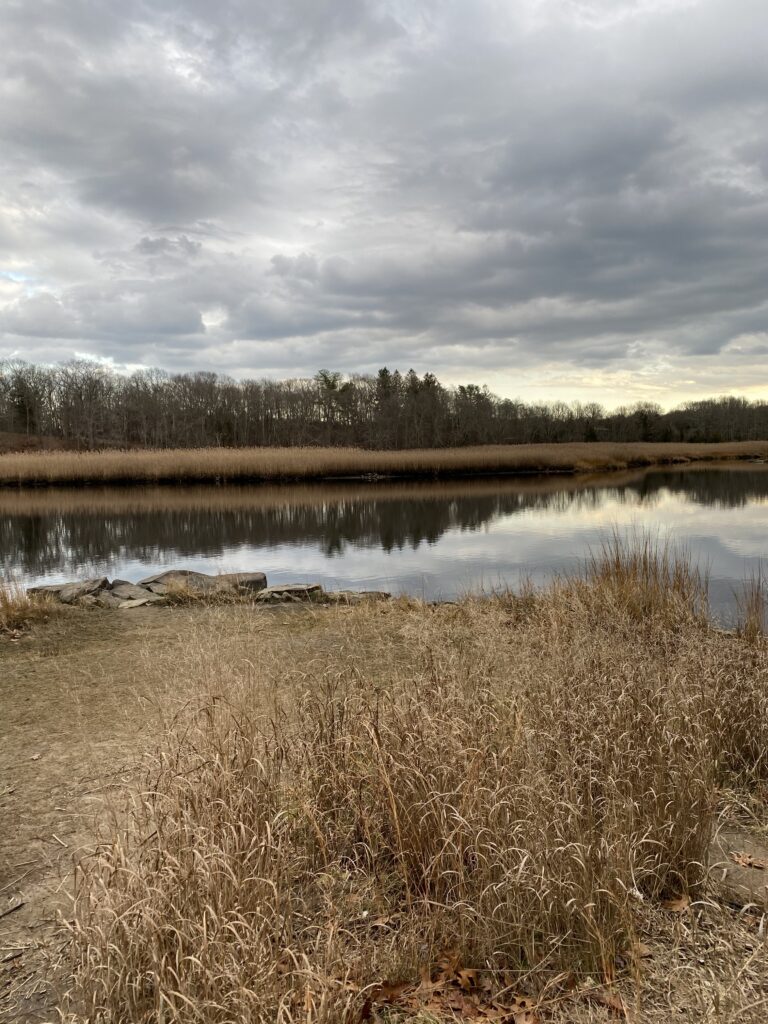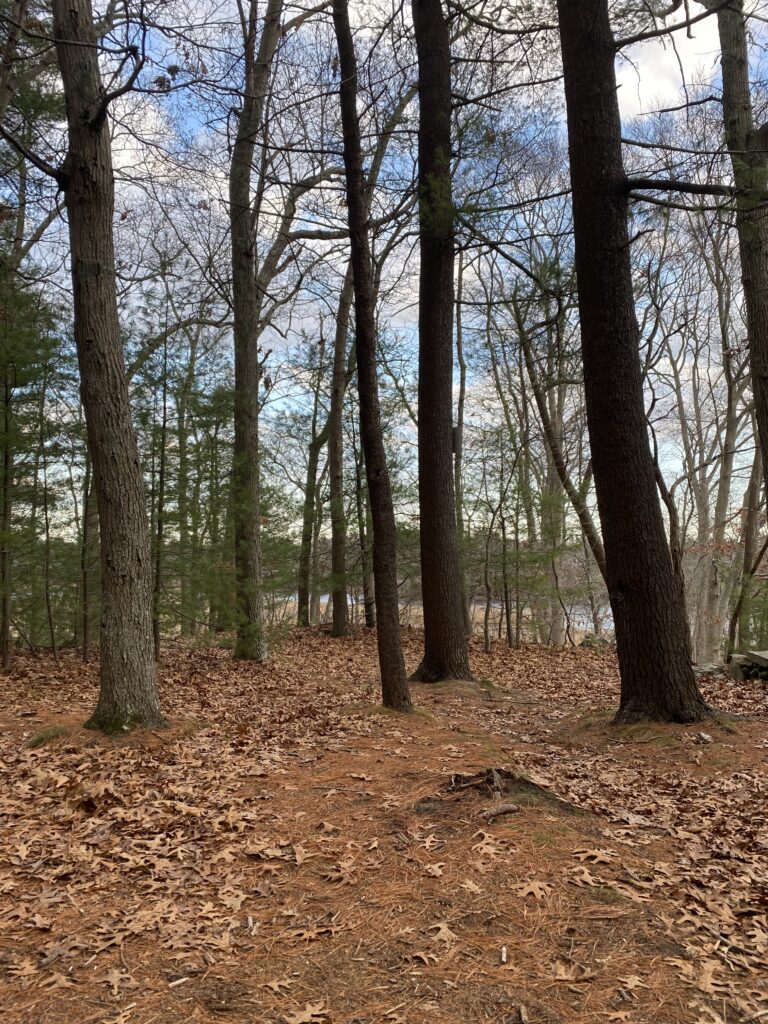Exploration of Phenology- November 29th, 2020
Phenology from home- Sweets Knoll State Park

After moving back to my home base in Dighton, Massachusetts, I decided to choose a phenology spot that meant a lot to me. Sweets Knoll State park is located in my town of Dighton, and is a place that I have been going to since I was a child. As I became more interested in the environment and ecology during high school, it was a spot where I could go to study the natural ecosystems around me and observe different species of plants and animals coexisting in the area. Dighton is mostly comprised of farm land and suburban neighborhoods, so Sweets Knoll has always been an excellent place to get away from the average day to day life and reflect in nature.
Sweets Knoll is a state park resting alongside the Taunton River. It is comprised of walking trails through the woods, waterfront viewing areas, and even an abandoned railroad bridge. The park is habitat for different species of wildlife, such as squirrels, raccoons, foxes, ospreys, ducks, a family of bald eagles, and more. When comparing Rock Point to Sweets Knoll, we may see similarities and differences in both the ecology and phenology of the areas. For example, Sweets Knoll tree species are mostly comprised of White Pines, as well as multiple species of Oaks, American Beeches, and a few species of Birch trees. At Rock Point we are also seeing White Pines, American Beeches, and Red oak, but Northern White Cedar, Sugar Maple, and Green Ash are also present there. At Rock Point, the Champlain Thrust fault sits on Lake Champlain, a body of freshwater. On the other hand, Sweets Knoll sits alongside a river, which is a body of salt water. Although I wasn’t able to measure the pH of the soil at Sweets Knoll, I would assume that the salt water alongside the park and the amount of White Pines present may affect the acidity of the soil. At Rock Point however, we are seeing a relatively neutral pH. Both sites are greeting winter in the same manner; deciduous trees losing their leaves, bird species migrating for the season, and soil starting to freeze. While Rock Point is a fantastic place to observe the geology of Vermont, Sweets Knoll is a prime place to study saltwater and woodland ecosystems. I am expecting to see more changes in both ecosystems as the winter months continue, and hope that while I am home in Massachusetts I can use Sweets Knoll as a place to study phenology.


